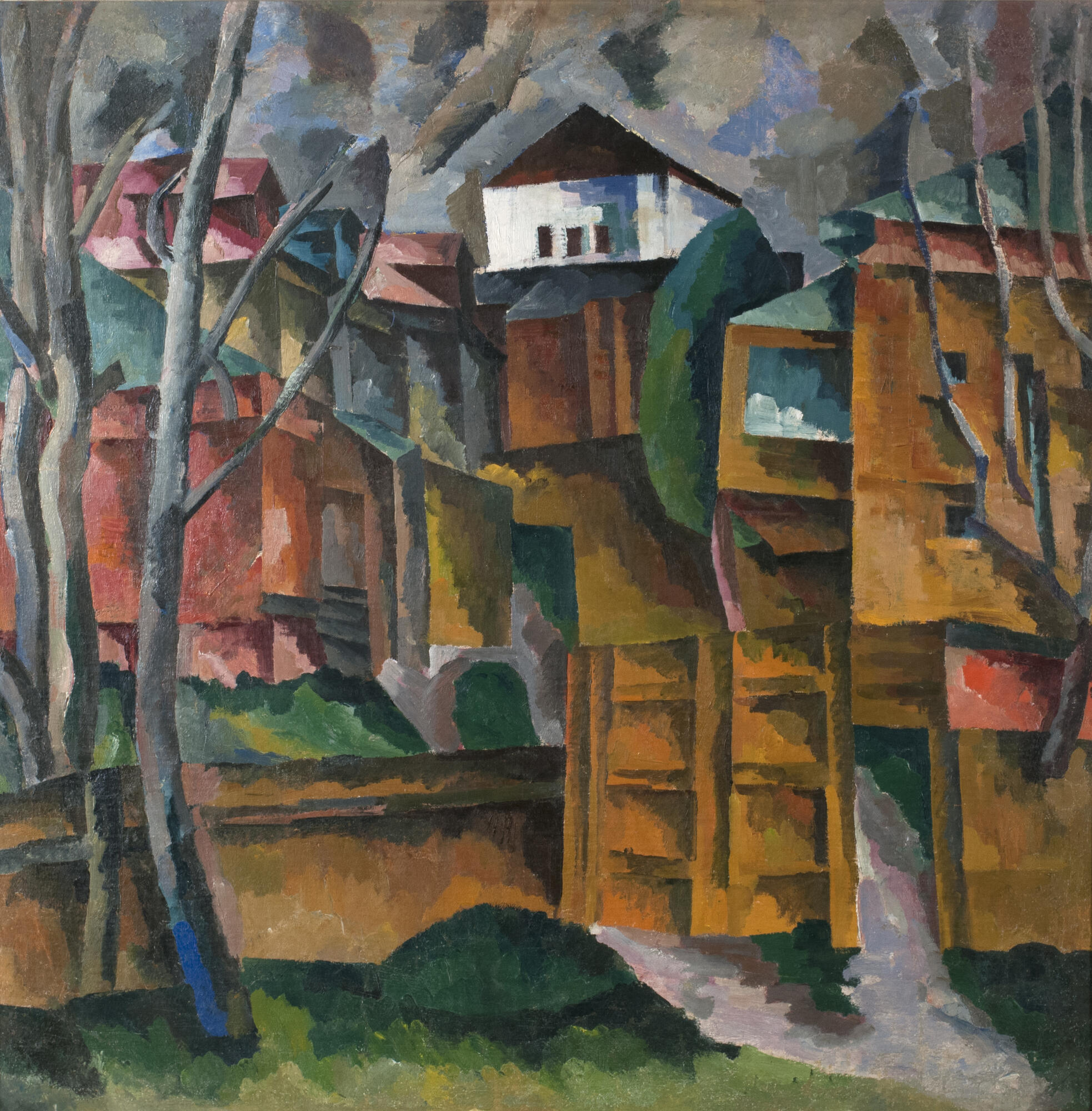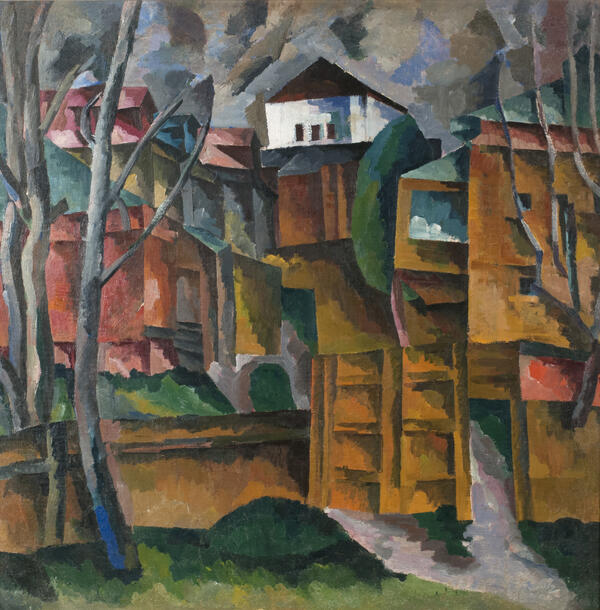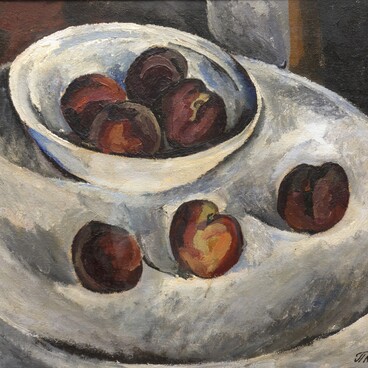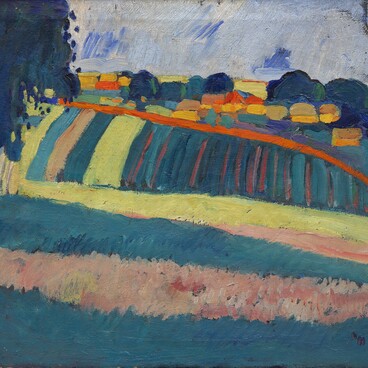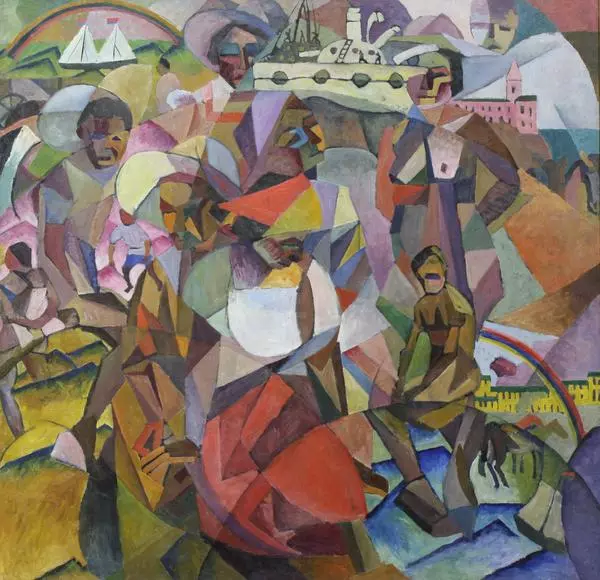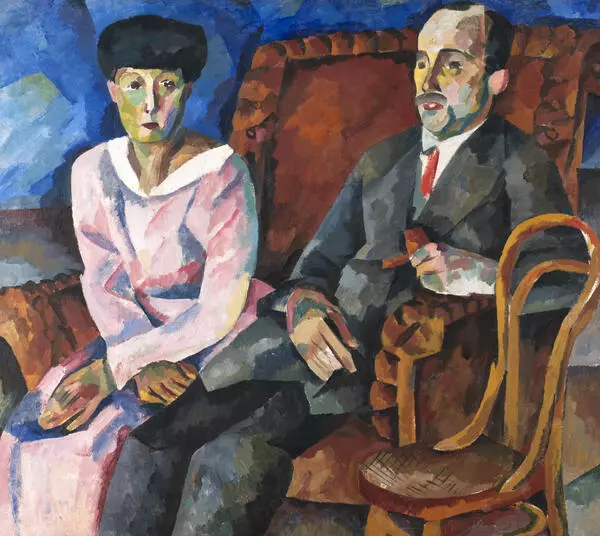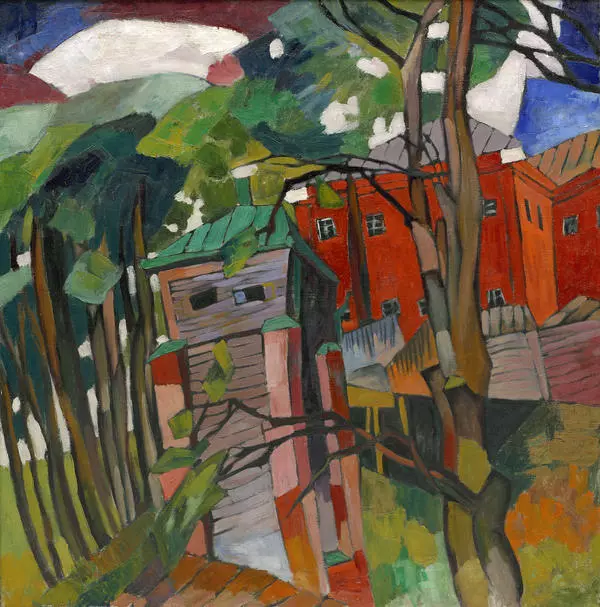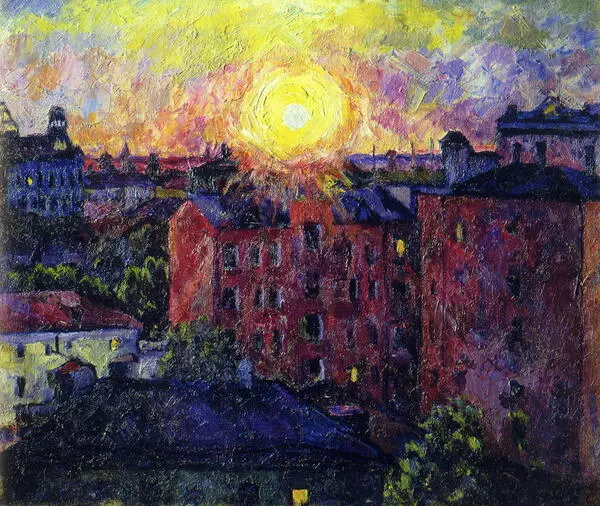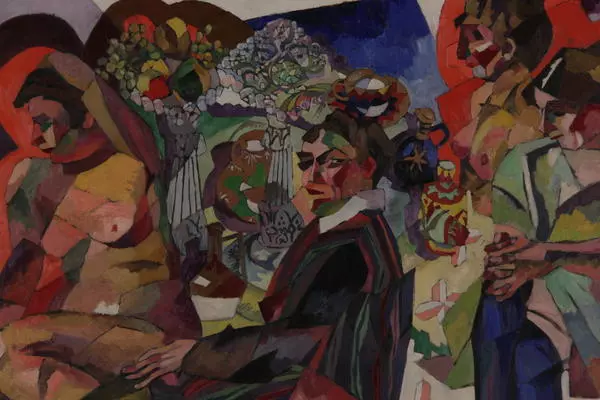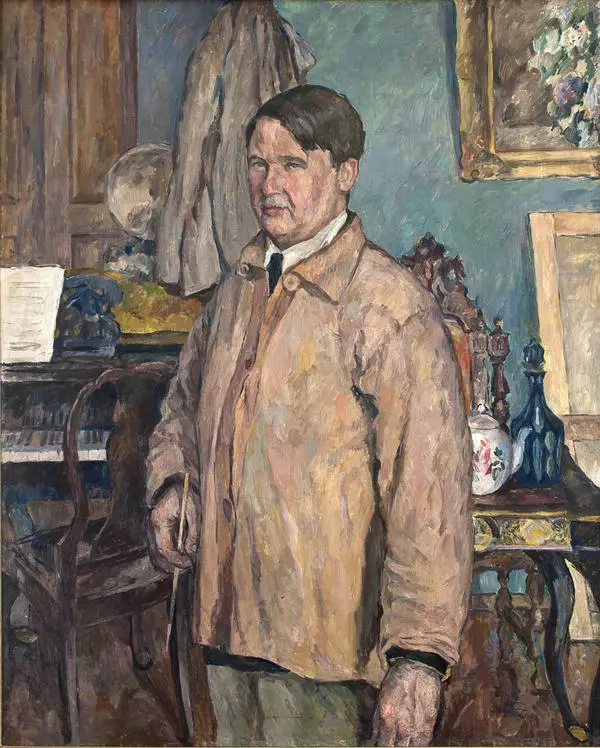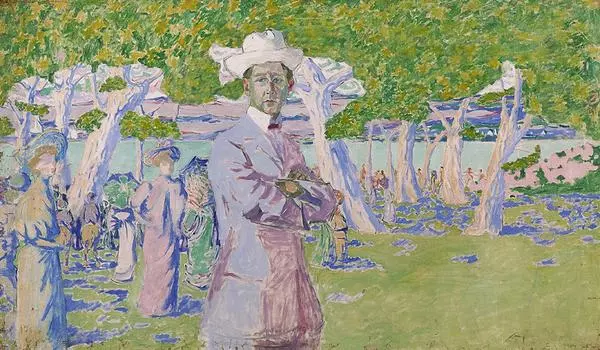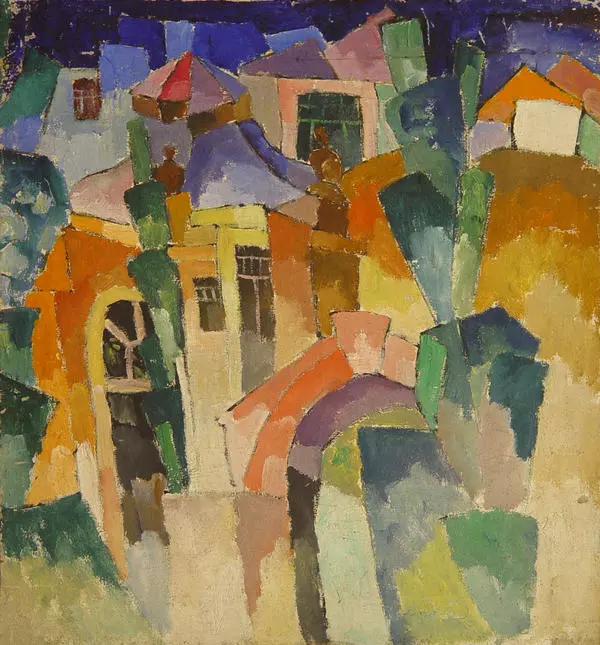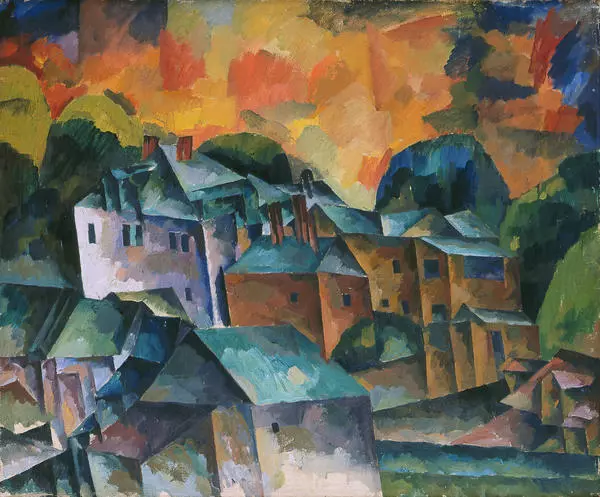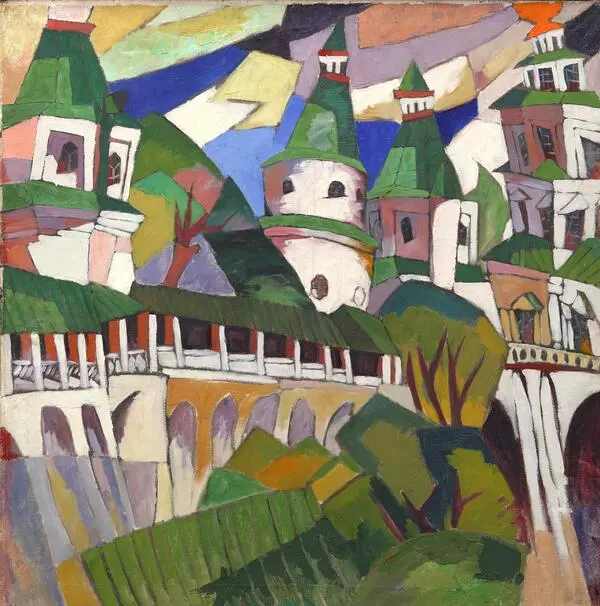At the turn of the 1920s, Aristarkh Lentulov, one of the founders of the avant-garde association ‘Jack of Diamonds’, briefly turned to assimilating the system of the great French artist Paul Cezanne. Lentulov spoke about this: ‘Contemporary French art, however, did not as strong an impact on me as it did on all the Moscow artists. In this sense, I stand somewhat aloof, but Cezanne represents the beginning of all possibilities, insofar as I am his student’.
Among the works from this period is Landscape with a Yellow Gate, which is very characteristic of the artist’s style during that time. The landscape was created as part of a cycle done from 1920-1922, created in the settlement in the Trinity Lavra of St. Sergius monastery (Zagorsk). Drawing on the example of the works in this series, it is possible to trace the evolution of the painting method, and attitude toward the subject, that took place over three years in Aristarkh Lentulov’s creativity. He gradually abandons that light, luminous, crystalline decorative painting, from ‘cubization’ and deformation in architectural and natural images, which become more realistic. This approach to nature is based on a figurative reinterpretation of the legacy left by Cezanne.
In Landscape with a Yellow Gate, the artist creates the image of an old Russian city. In the foreground there are bare, dry trees and a yellow stone wall with a gate, and a lilac pink road runs into that. Behind the wall, one- and two-story houses, depicted very provisionally, ‘clamber’ up the knoll. Their walls are flattened, shaped into cubes, and unfold parallel to the painting’s surface. The main color in the painting, which creates its sound, is yellow and red ocher; all the buildings are painted with it, except for one white house with a dark brown roof at the very top of the canvas. The ocher color range is enriched with various, muted, contrasting tones of gray, blue, light purple, appearing in shadows, roofs, the sky, the trunks of the dry trees and the road, as well as by the green shades of the grass and the crown of a tree that stands behind a house with a balcony.
The composition strictly follows the intended vertical and horizontal lines, and the overall color rhythm of the carefully superimposed strokes. A characteristic slight inclination of the vertical lines to the left is conveyed. Only the house with a balcony seems to swing to the right. This slight dissonance in the rhythm imparts balance and harmony to the painting. The high horizon, and bottom-up view, create a sense of monumental scale.
Abbreviated perspectives are used in the landscape, but the objects are painted from different points of view, which is typical for Lentulov and other artists like the cubists and cezannists. The space is built exclusively with color: there is no aerial perspective, and the elements of linear perspective do not play a decisive role.
Among the works from this period is Landscape with a Yellow Gate, which is very characteristic of the artist’s style during that time. The landscape was created as part of a cycle done from 1920-1922, created in the settlement in the Trinity Lavra of St. Sergius monastery (Zagorsk). Drawing on the example of the works in this series, it is possible to trace the evolution of the painting method, and attitude toward the subject, that took place over three years in Aristarkh Lentulov’s creativity. He gradually abandons that light, luminous, crystalline decorative painting, from ‘cubization’ and deformation in architectural and natural images, which become more realistic. This approach to nature is based on a figurative reinterpretation of the legacy left by Cezanne.
In Landscape with a Yellow Gate, the artist creates the image of an old Russian city. In the foreground there are bare, dry trees and a yellow stone wall with a gate, and a lilac pink road runs into that. Behind the wall, one- and two-story houses, depicted very provisionally, ‘clamber’ up the knoll. Their walls are flattened, shaped into cubes, and unfold parallel to the painting’s surface. The main color in the painting, which creates its sound, is yellow and red ocher; all the buildings are painted with it, except for one white house with a dark brown roof at the very top of the canvas. The ocher color range is enriched with various, muted, contrasting tones of gray, blue, light purple, appearing in shadows, roofs, the sky, the trunks of the dry trees and the road, as well as by the green shades of the grass and the crown of a tree that stands behind a house with a balcony.
The composition strictly follows the intended vertical and horizontal lines, and the overall color rhythm of the carefully superimposed strokes. A characteristic slight inclination of the vertical lines to the left is conveyed. Only the house with a balcony seems to swing to the right. This slight dissonance in the rhythm imparts balance and harmony to the painting. The high horizon, and bottom-up view, create a sense of monumental scale.
Abbreviated perspectives are used in the landscape, but the objects are painted from different points of view, which is typical for Lentulov and other artists like the cubists and cezannists. The space is built exclusively with color: there is no aerial perspective, and the elements of linear perspective do not play a decisive role.
